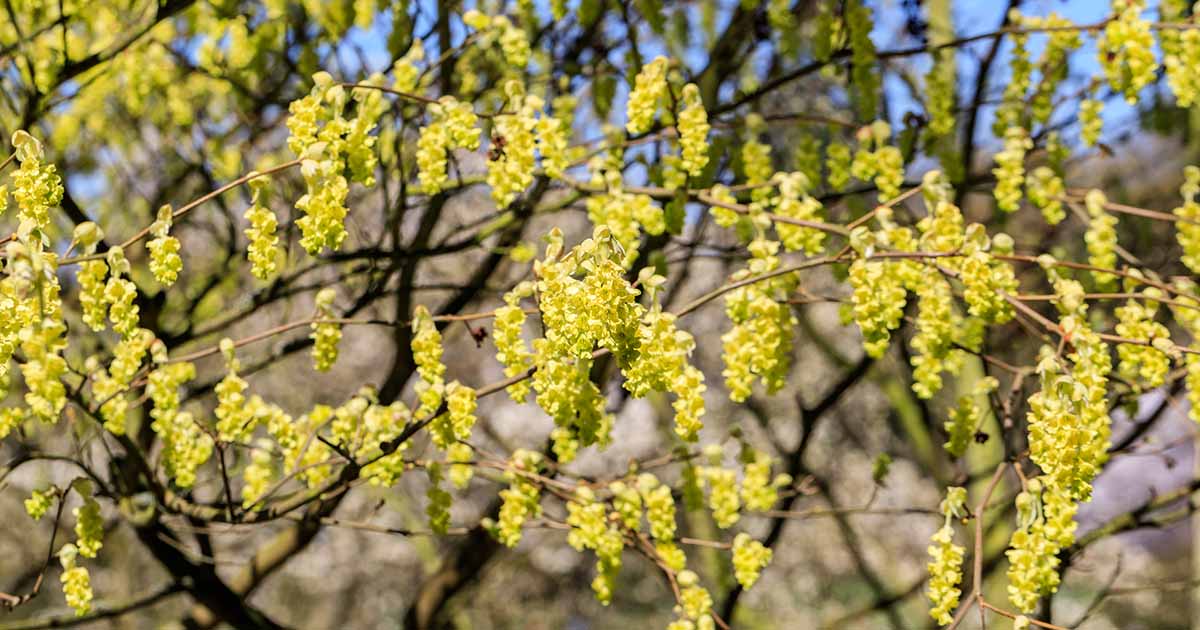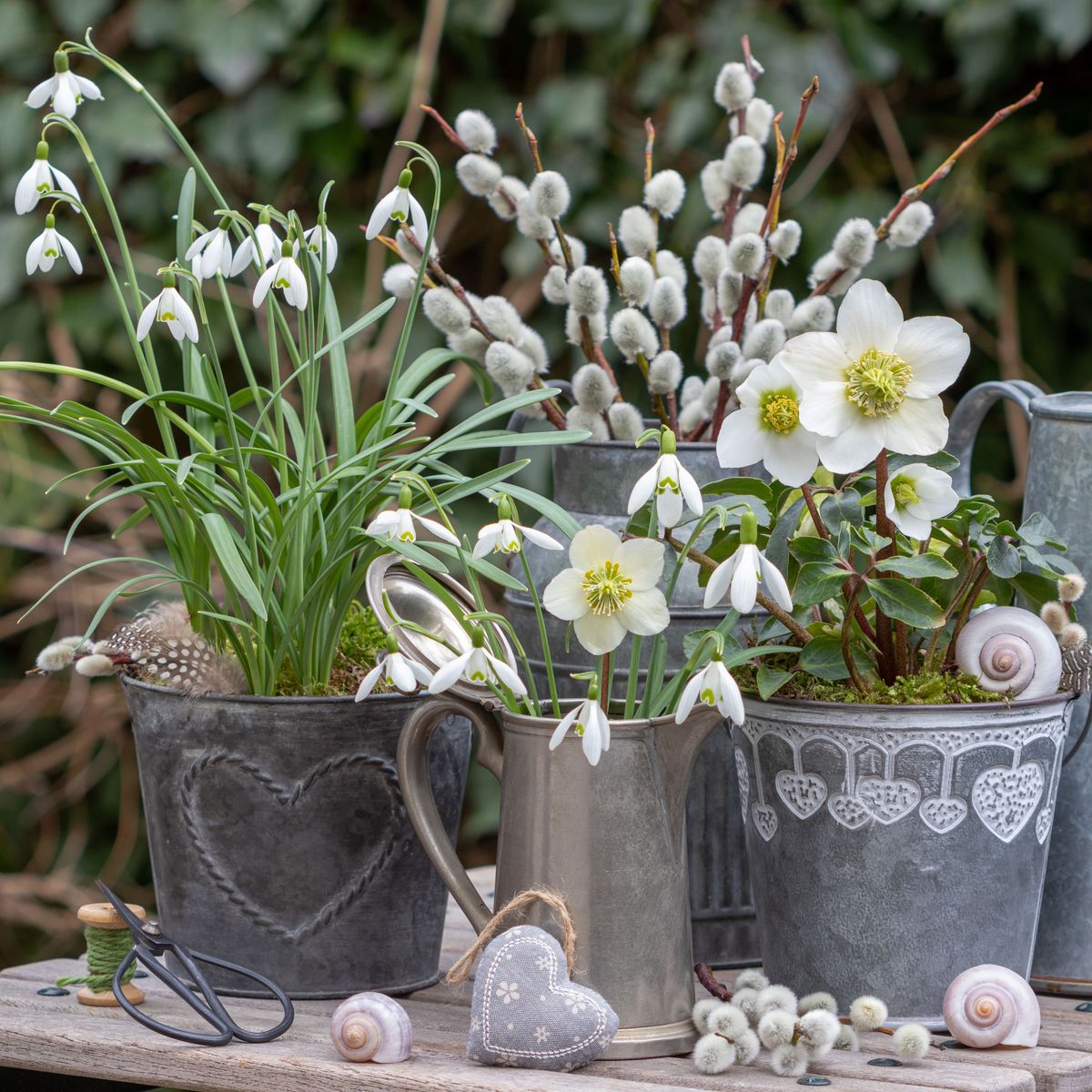Corylopsis spp.
If you want gardening season to start with a beautiful bang, then winterhazels are the shrubs for you.
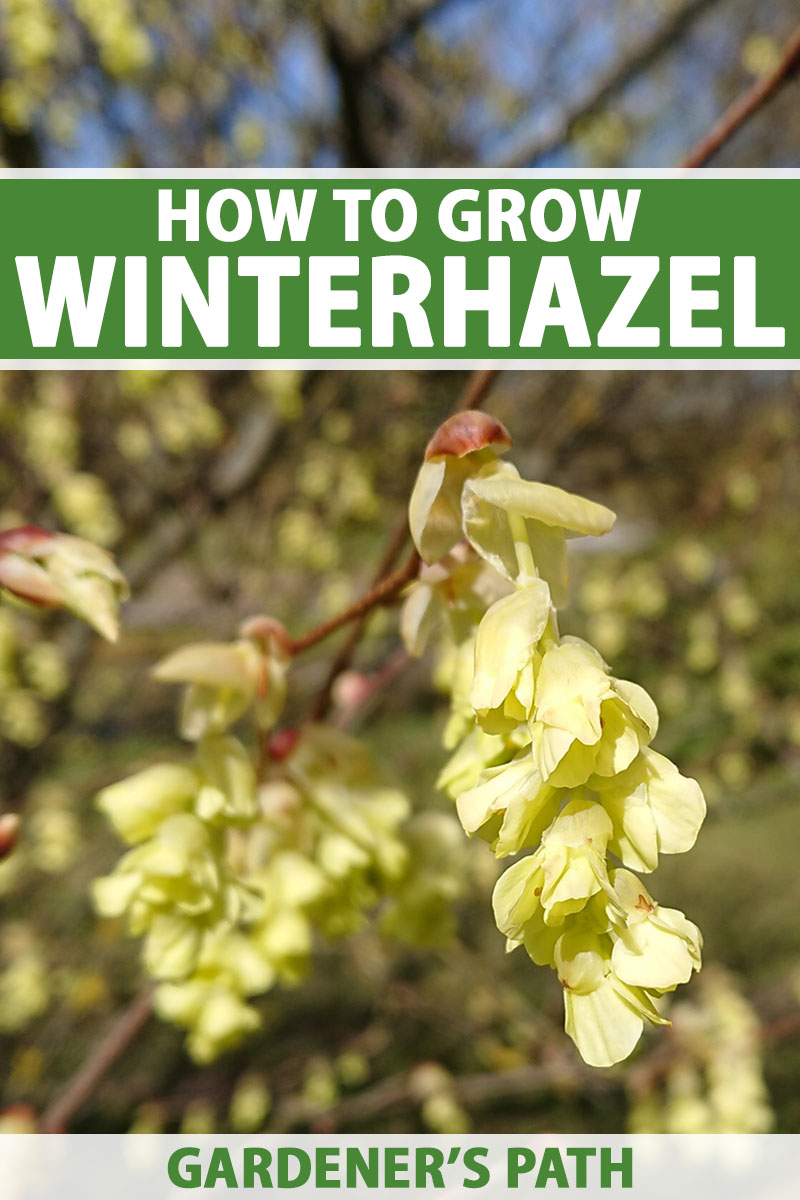
We link to vendors to help you find relevant products. If you buy from one of our links, we may earn a commission.
The first guest to show up at a party can really set its tone. A notorious party animal dials the energy up to 11, while a shy attendant with a board game in hand brings a more laid-back vibe.
Not if the game is Monopoly, though – that’ll ruin relationships in a violent, flip-the-table-over fashion. But I digress…
In the garden, winterhazel’s early-blooming flowers burst with color well before other plants, and forecast that spring is coming soon, in style. After the blooms come the leaves, which add some magnificent mass to the shrub’s multi-stemmed habit.
An all-around delightful addition to the landscape, species of Corylopsis are easy to grow and care for.
To make the process even easier, this guide provides all the cultivation know-how you’ll need.
Here’s what we’re getting into:
What Are Winterhazel Plants?
Belonging to the Hamamelidaceae family alongside witch hazels and fothergilla, winterhazels include 25 species of deciduous woody shrubs from the Corylopsis genus.
For the most part, they are hardy in USDA Zones 6 to 8, except for C. glabrescens, which is hardy down to Zone 5.
The various winterhazel species originate in the East Asian countries of China, Japan, North Korea, South Korea, and Taiwan, where they’re found growing in clearings, within woodlands, and on mountainous slopes.
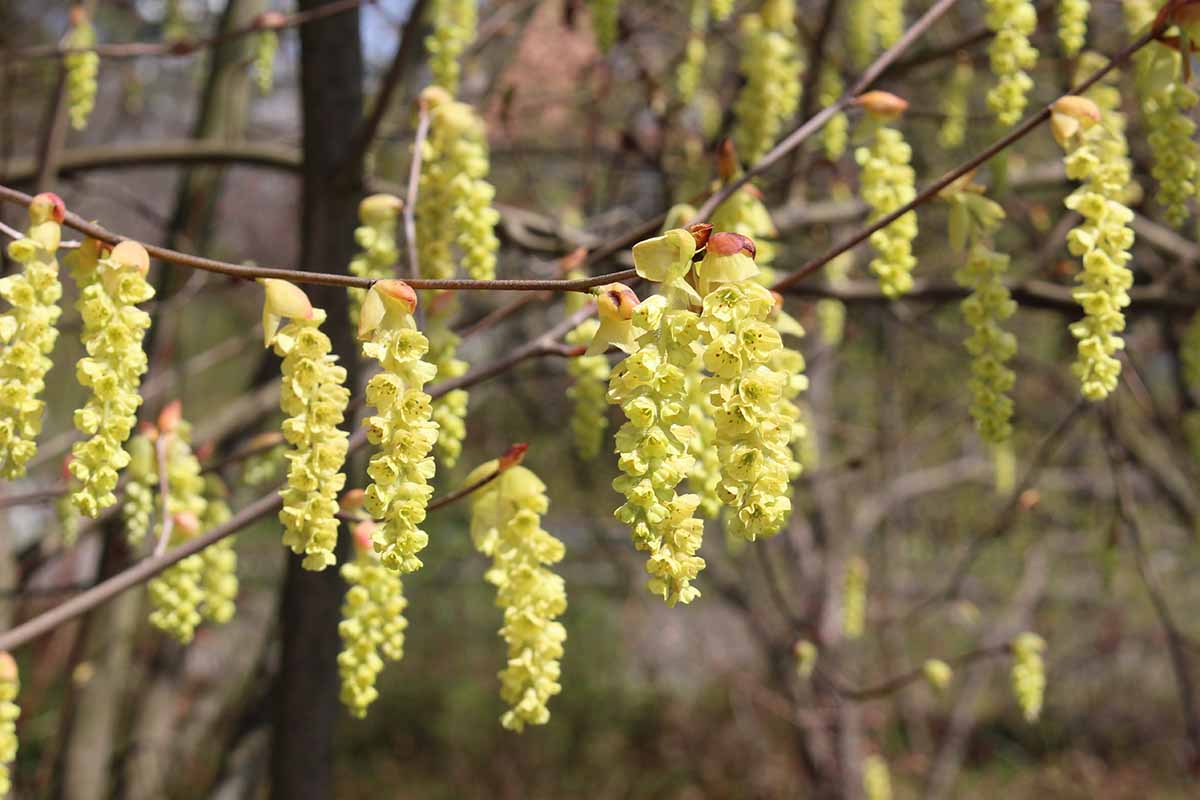
There aren’t huge differences between the species, so it can be tough to differentiate them. But on the flip side, their similarities makes it easy to spot Corylopsis in a landscape.
Winterhazels have spreading, multi-stemmed forms that can reach heights and spreads of four to 15 feet, depending on the species.
These shrubs also have slow growth rates, with gently zig-zagging stems that are covered with smooth-textured bark in light shades of tan, brown, or gray.
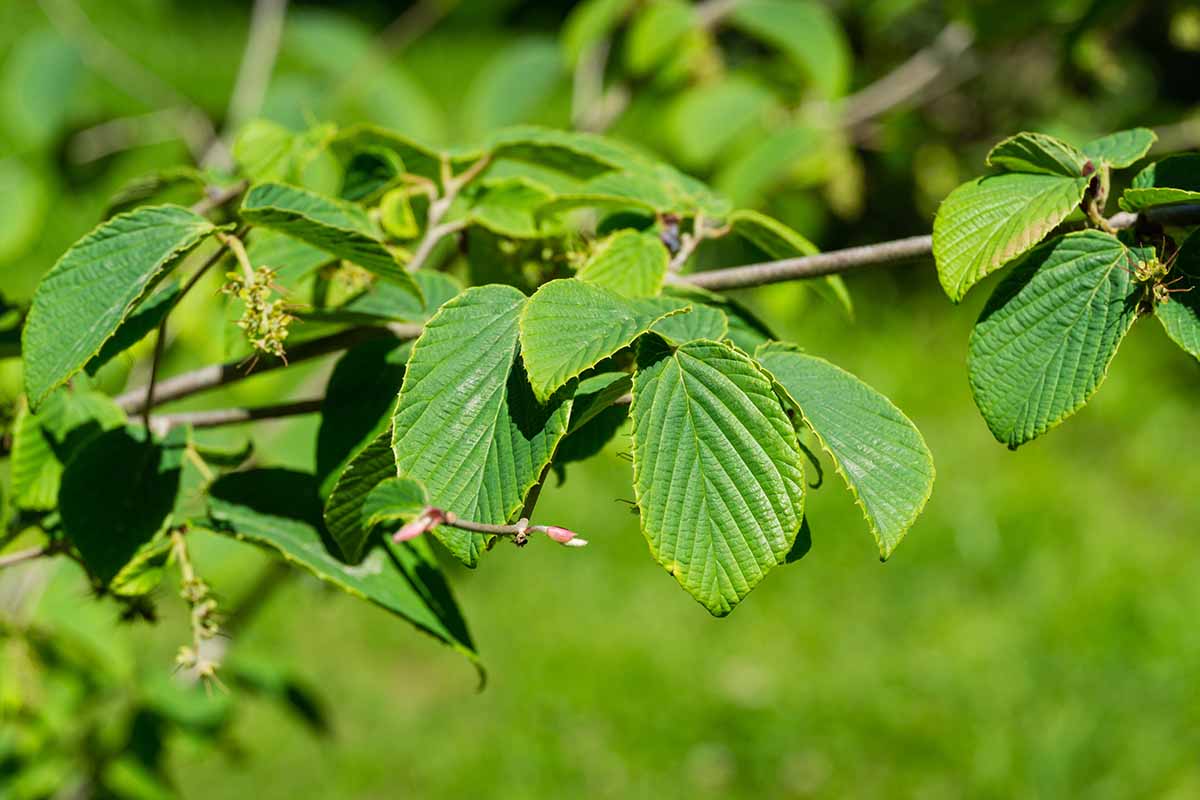
In late winter or early spring, hanging clusters of many small, fragrant, pale gold to greenish-yellow flowers will blossom, which are quite attractive to butterflies and hummingbirds.
If they’re pollinated, they’ll later give way to small, unremarkable fruit capsules, each containing two small, black seeds.
After the flowers bloom, the oval-shaped, deeply veined, and toothed leaves emerge in spring.
Depending on the species, they may start out bronze to reddish-purple before maturing to a light to dark green hue. Come fall, they’ll either turn yellow or retain their green color before falling.
Cultivation and History
Essentially meaning “hazel-like,” the genus name Corylopsis is totally fitting, given how much winterhazel leaves look like those of Corylus species, or true hazel plants.

Ever since they were introduced into western horticulture from Asia around the late 19th to early 20th century, winterhazels have earned appreciation from many temperate gardeners for their beauty and early bloom times.
Winterhazel Propagation
Ready to board the Corylopsis train? Your best shot at getting some winterhazels in the ground is either by taking cuttings from a mature plant or transplanting juvenile specimens.
You can technically sow seeds to propagate new winterhazel plants, but since this involves several months of shifting temperature treatments and years of patience after germination occurs, it’s not recommended for newbies.
From Cuttings
For this method, you’ll need an established, mature winterhazel plant to take cuttings from.
In summer, take four- to six-inch cuttings from the ends of healthy shoots with a sterile blade.
Defoliate the bottom halves, and dip the cut ends into a rooting hormone such as Bonide’s IBA powder from Arbico Organics.

Bonide Rooting Powder
Fill four-inch containers with a soilless medium that provides both water retention and drainage, such as a 50:50 mix of peat moss and perlite.
Stick the bottom halves of each cutting into the containers, moisten the media, then set the containers somewhere indoors where they will receive bright, indirect light – a sunny windowsill is perfect.
Mist the cuttings each morning and keep the potting medium consistently moist.
In about two months or so, once the cuttings have rooted – which you can discern by gently tugging the stem – you can lay off the misting.
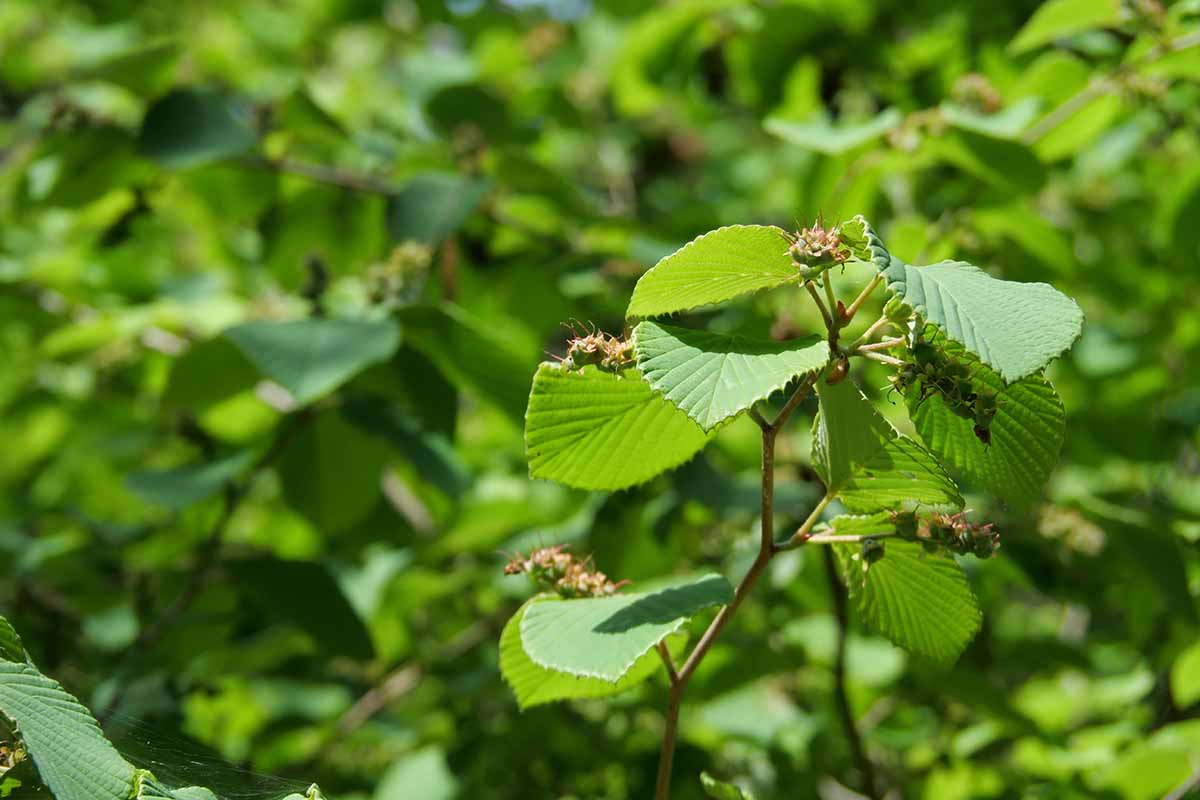
Newly-rooted winterhazel cuttings have weak, sensitive root systems, so it’s best to keep them in place through the winter until the following growing season.
Once new growth resumes and the local final frost date has passed, they’re ready for hardening off.
To do this, bring the rooted cuttings outside into full sun to partial shade for 30 to 60 minutes before bringing them back inside.
Add a half to a full hour of exposure each following day until the cuttings can withstand a full day of being outside.
At this point, it’s transplanting time!
Transplanting
Whether you’ve got hardened off cuttings that you rooted or ready-to-transplant winterhazel specimens that you’ve purchased, transplanting is pretty simple.
After the first frost-free date in spring, prepare planting sites in well-draining, loamy to sandy soils with a pH of 5.0 to 6.5. Space these sites about as far apart as you expect the transplants to eventually spread at maturity.
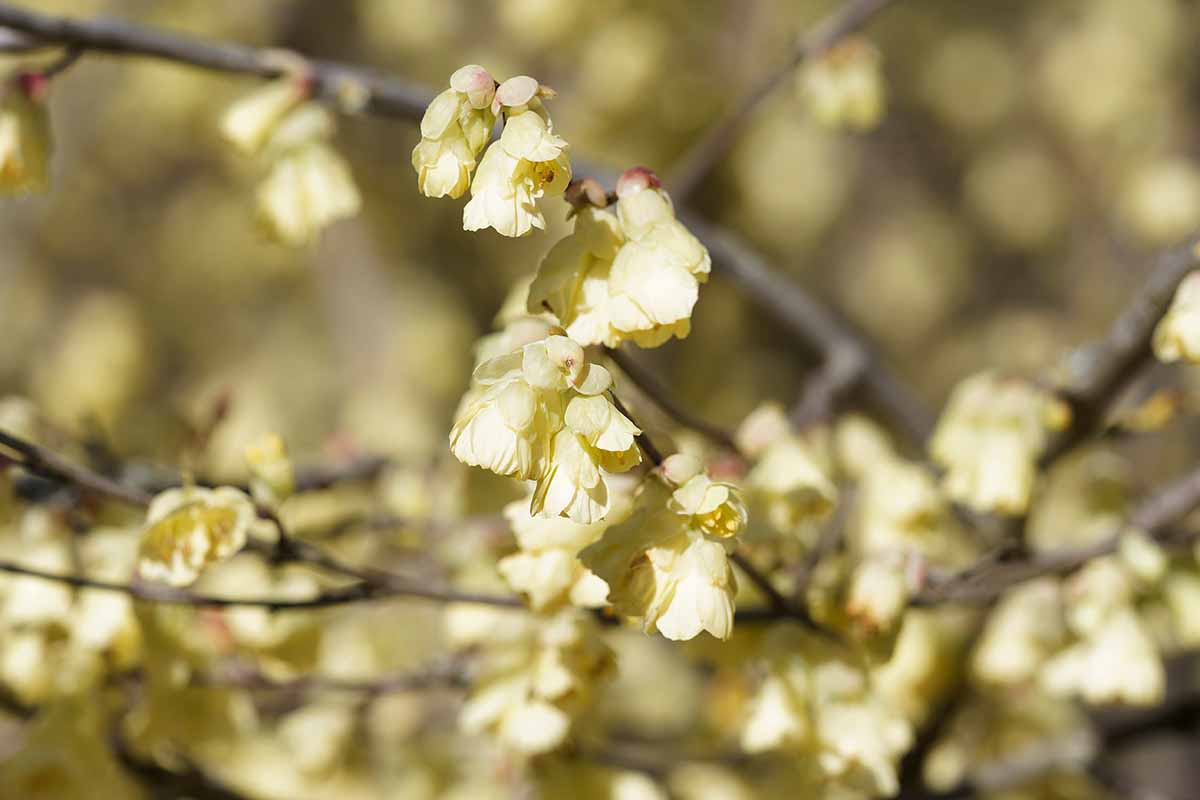
Dig holes as deep as and slightly wider than the transplants’ root systems. Gingerly ease the transplants from their containers or burlap wrappings, then gently lower them into their holes.
Mix some humus such as compost or well-rotted manure with the dug-out soil, and begin backfilling.
Alternate additions of soil and water until you’re left with fully planted and watered-in specimens. After that, pat yourself on the back for a job well done!
How to Grow Winterhazel
Whether you’ve just transplanted new winterhazel shrubs or you’re attending to the ones already in your landscape, the right kind of TLC makes all the difference.
Climate and Exposure Needs
First things first: winterhazels are hardy in USDA Zones 6 to 8… unless you’re growing C. glabracens, which is hardy in Zone 5 as well.
These plants do well in full sun to partial shade, depending on their role in the landscape and the ambient climate.
Though it’s important to note that more sunlight typically results in better blooms over the long haul.
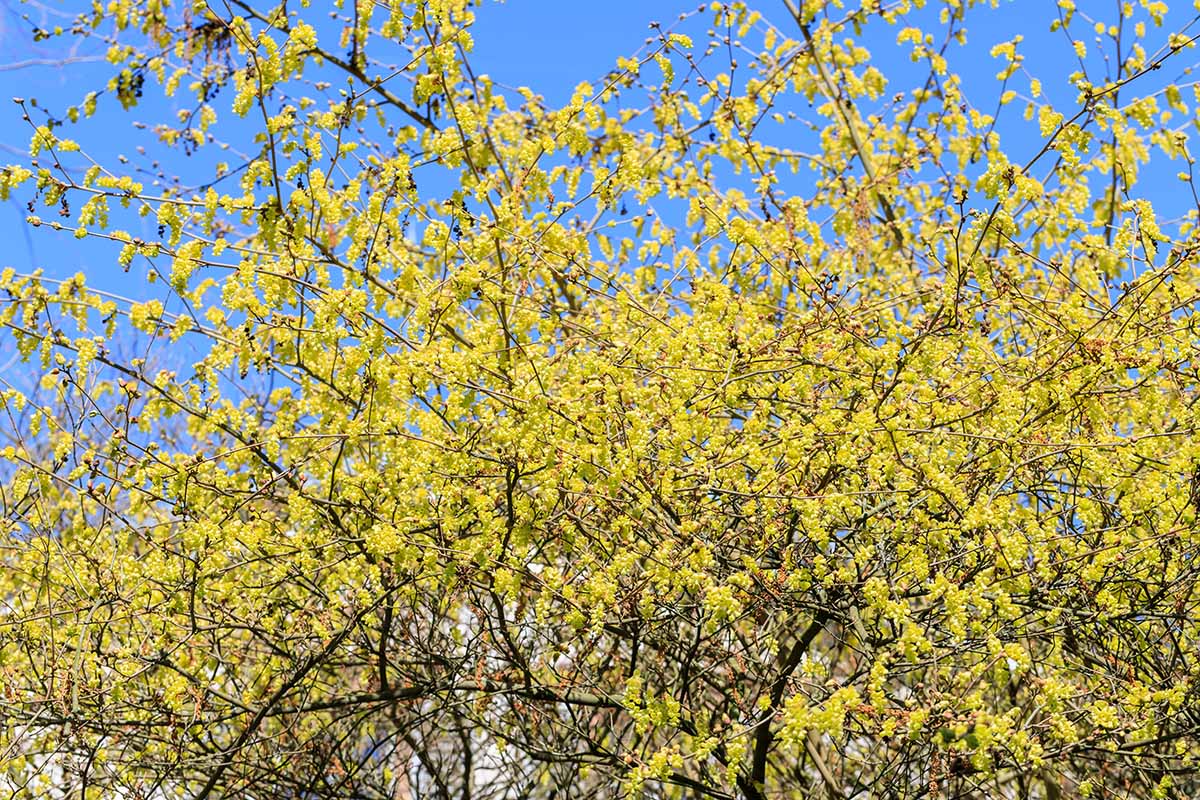
If you’re gardening in Zone 6 with lots of open space for specimen plantings, opt for full sun. Have a woodland garden in Zone 8 that could use some understory shrubs?
It’s fine to select a planting area with more shade. If you choose a spot under deciduous trees, then don’t forget that you’ll have more exposure and less shade when the trees are bare.
Either way, some protection from wind is advisable – the blooms are delicate, especially in late winter without any leaves to shield them.
Try placing winterhazels next to buildings, walls, or tall lines of evergreens such as arborvitae.
Soil Needs
The recommended soil conditions for transplanting – organic, a bit acidic, and well-draining – are also ideal for established specimens.
To maintain that organic composition, work a couple inches of humus into the root zone each spring.
Water Needs
Species of Corylopsis love moderate moisture, and can even withstand moderate drought. But that’s moderate, not severe – don’t be treating these shrubs like cacti or anything.
Irrigation-wise, deeply water the root zone whenever the top couple inches of soil dry out.
Growing Tips
- Winterhazel blooms benefit from protection from wind.
- Each spring, be sure to amend the root zone with organic matter.
- Irrigate whenever the top 1-2 inches of soil feel dry to the touch.
Pruning and Maintenance
Aside from promptly removing dead, diseased, or damaged tissues, there’s not much that needs to be done for these plants, pruning-wise.
If you want to encourage a particular shape or size, prune away no more than a third of the shrub’s aboveground mass after the flowers fade in late spring to summer.
You could also clip branches when they’re in bloom to enjoy their scent indoors in floral arrangements.
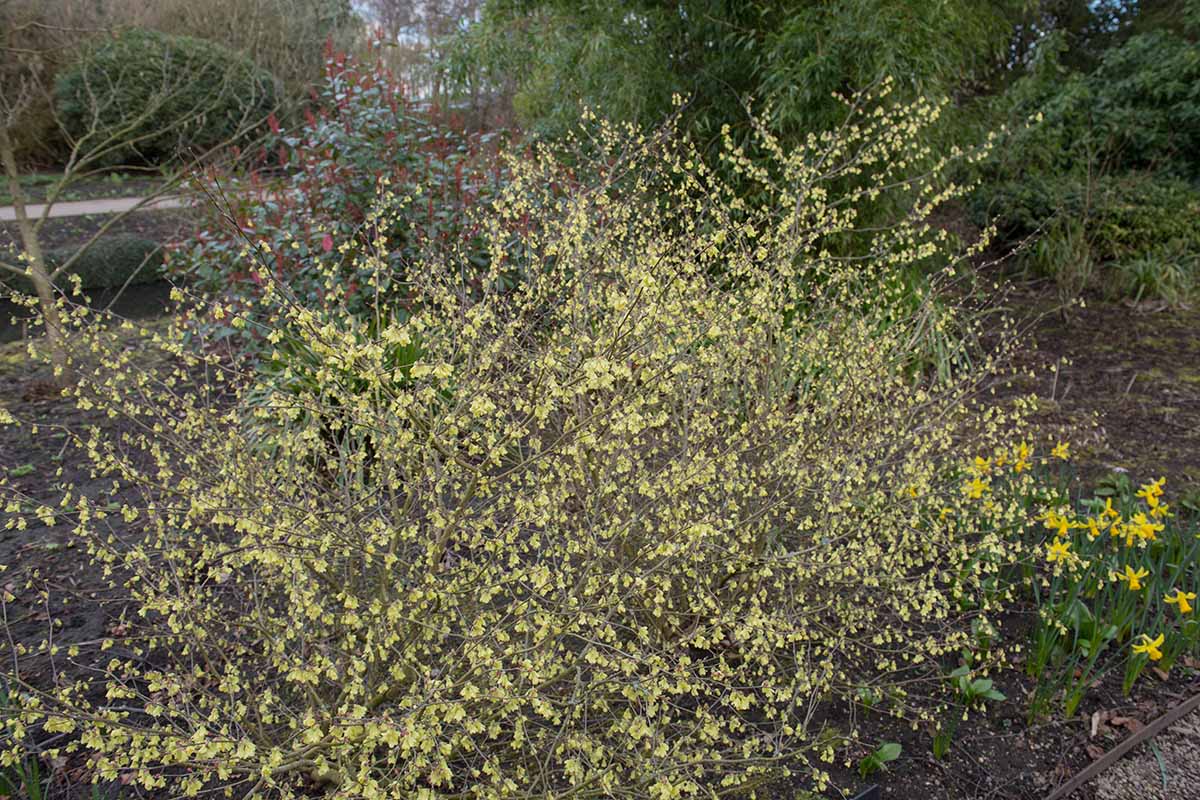
When the spent flowers fall, and later the leaves, feel free to rake them all up for a neater, more sanitary environment.
But if you’ve got a woodland garden going, you can leave them be, as fallen leaves can actually add to the natural aesthetic and help to enrich the soil.
To protect the roots, conserve moisture, and suppress weed growth, be sure to maintain a few inches of mulch above the root zone. If that layer starts to become thin, mid-spring and fall are perfect mulching times.
Winterhazel Species to Select
As of this writing, there are 25 currently recognized species of Corylopsis. That’s enough for an advent calendar, if you like the idea of counting down to Christmas with winterhazel shrubs…
Here are my top three favorites:
Buttercup
Native to western Japan and Taiwan, C. pauciflora blooms a bit earlier than other species.
It flaunts pale yellow blooms in clusters of two to five flowers and bright green leaves with distinct, sunken veins.
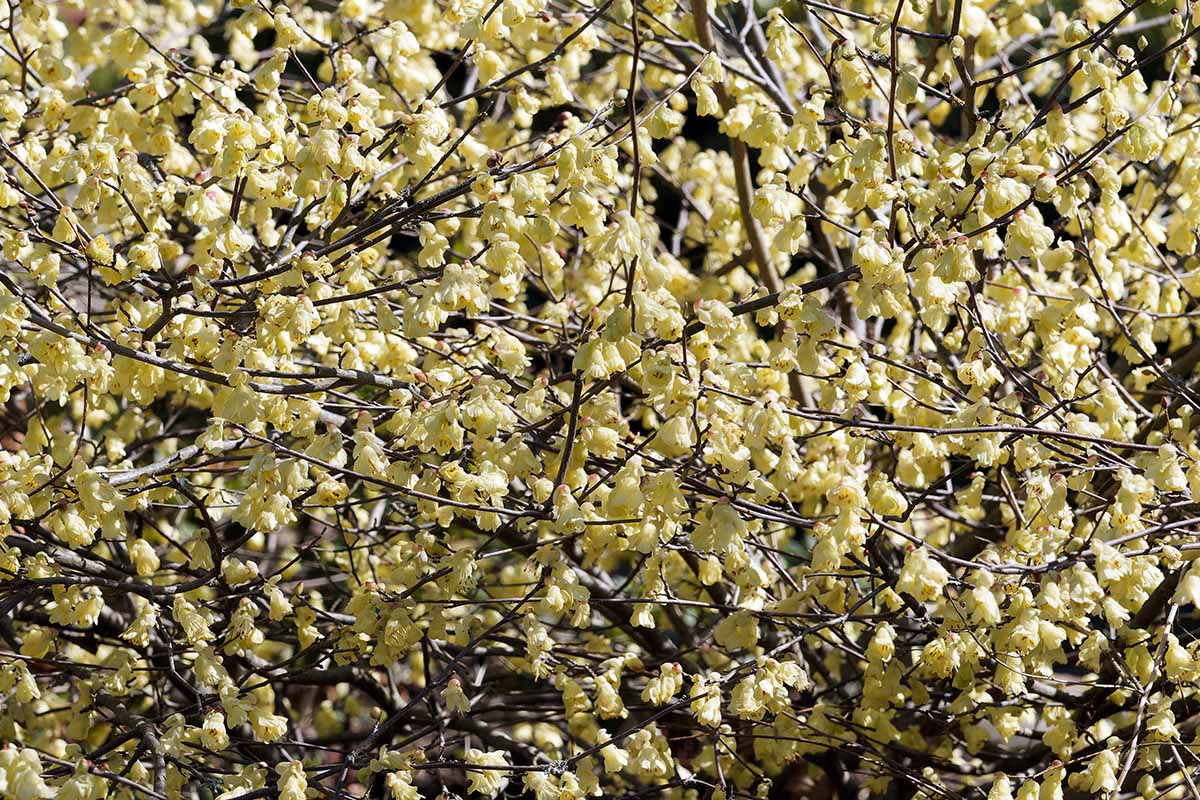
With a mature height and spread of four to six feet, the buttercup winterhazel is the perfect choice if you’re looking for an especially dainty Corylopsis.
Fragrant
Hailing from Japan, C. glabrescens reaches heights and spreads of eight to 15 feet, sporting dark green leaves.
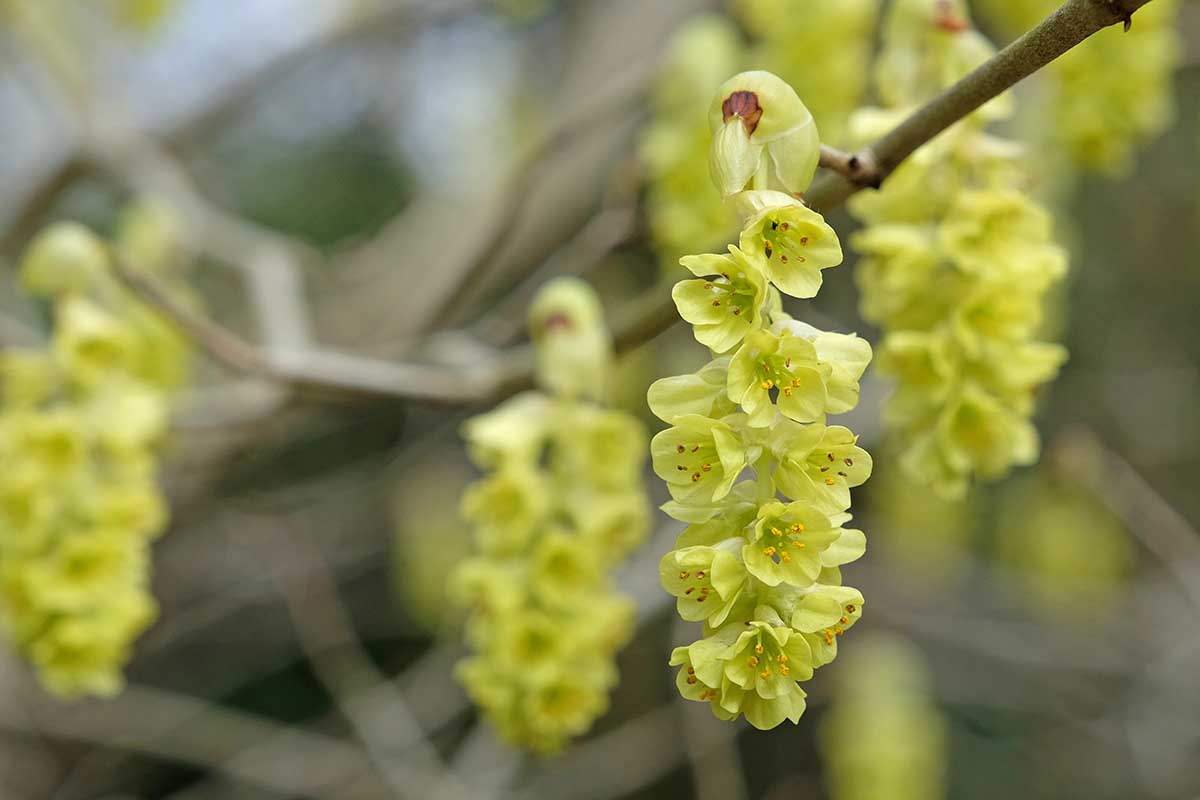
Named for the especially strong scent of its pale yellow blooms, fragrant winterhazel is hardy in USDA Zones 5 to 8, making it the obvious choice for Corylopsis growers in more northern gardens.
Spike
Another Japanese native, C. spicata reaches a mature height of four to eight feet, with a spread up to twice as wide.
The blooms on this winterhazel are especially colorful – at the center of the yellow petals are brown, purple, or red anthers held up on pink filaments.
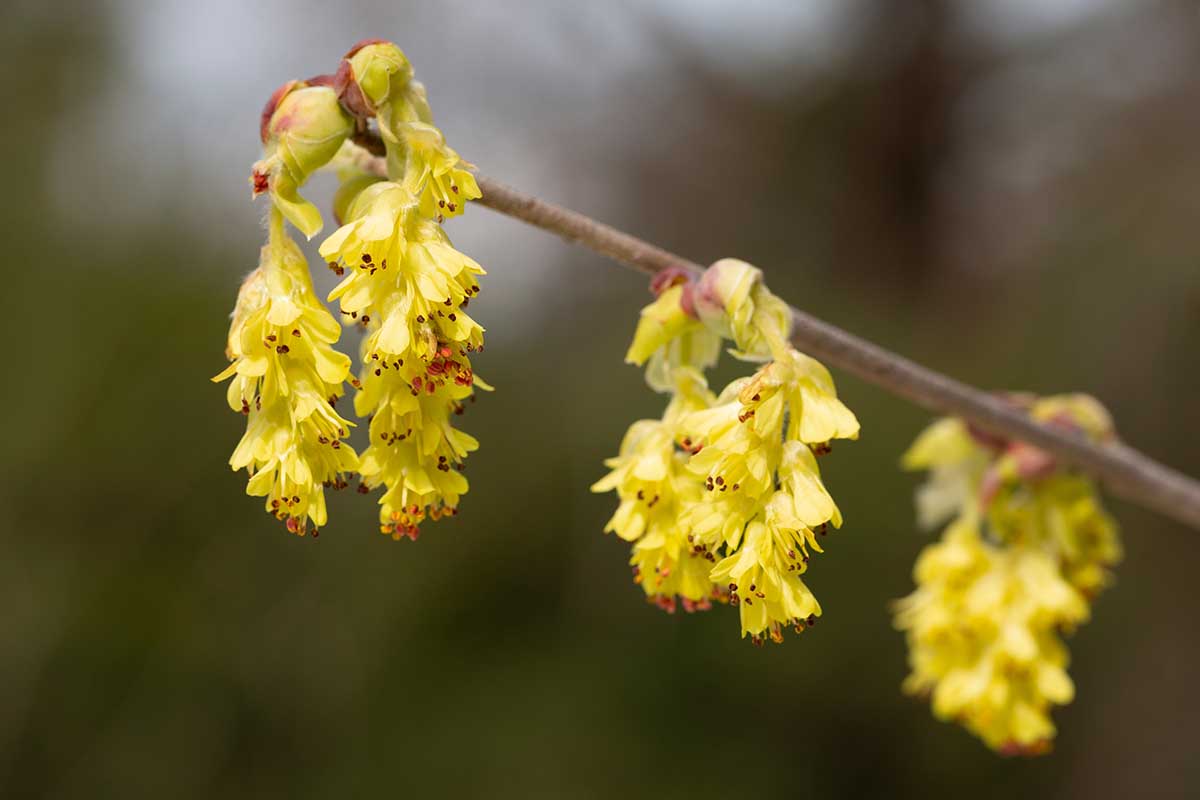
Add leaves that emerge in an attractive shade of purple before maturing to a lovely blue-green, and you have the most colorful entry on our list.
Managing Pests and Disease
Winterhazels are blessed with practically no serious pests or disease issues to worry about.
However, there are two potential problems you should be on the lookout for: Japanese beetle infestations and root rot.
Japanese Beetles
An invasive species from the Land of the Rising Sun, Popillia japonica is a common pest that’s found throughout the eastern United States, although it’s slowly spreading westward.
With a metallic green head and thorax, coppery brown wing covers, and a body length of up to half an inch, adult Japanese beetles primarily hurt winterhazels by chewing conspicuous holes in their leaves.
Along with looking ugly and skeletonizing leaves, this feeding damage hinders photosynthesis and overall plant growth.
The simplest form of control is “soapy death,” where you knock pests into a bucket of soapy water that holds them below the surface as they drown. A grisly end, no doubt… but as the John Wick movies have shown us four times now, attacks on what you hold dear require extreme retaliation.
Be sure to strike in the morning or evening, when it’s cool. Less heat means less energy to dodge your efforts.
Of course, you could always spray your plants with neem oil or pyrethrin-based insecticides.
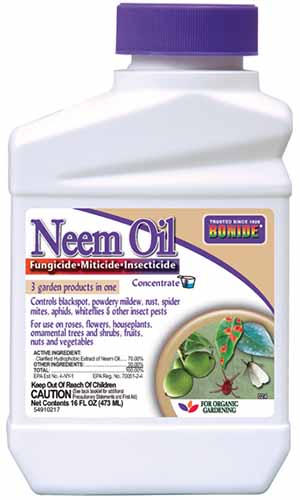
Bonide Neem Oil
Bonide sells neem oil in ready-to-use or concentrated form at Arbico Organics, and PyGanic sells their OMRI-certified, pyrethrin-based product in various volumes at Arbico Organics as well.
You can learn more about how to deal with Japanese beetles in our guide.
Root Rot
Just like many other plants with moderate water needs, species of Corylopsis like water, but not too much. If a winterhazel has “wet feet,” then its roots won’t receive the oxygen that they need.
Without oxygen, the roots become necrotic and die. This is bad news for the shoots above the soil line, which become wilted, stunted, and discolored.
When it comes to root rot, prevention is way better than attempts at a cure. In the case of winterhazel, this means allowing the top couple inches of soil to dry before watering, as well as planting them in well-draining soil from the get-go.
For smaller afflicted specimens that you can handle, dig them up – or hire a landscaping professional to help you lift larger ones – and examine their roots.
If less than half are rotted, cut them away and replant in an area with better drainage. If the majority of the roots are symptomatic, then you can go ahead and pitch it – the specimen may not be worth the effort to keep alive.
Best Uses of Winterhazel
Winterhazels are the perfect shrubs for those who want to dot their late winter landscape with some early blooms. But to optimize their potential, certain spots are better than others.

Given their origins, winterhazels look fantastic in Asian-themed gardens alongside plants such as Japanese maples and Japanese black pines. As understory shrubs, they also aesthetically support large trees in woodland gardens.
For landscapes with less of an overarching theme, winterhazel can really stand out as specimen plantings or as part of a shrub border.
And you can always utilize any trimmings with buds as part of floral arrangements by “forcing” them to blossom indoors.
Quick Reference Growing Guide
| Plant Type: | Deciduous flowering woody shrub | Flower/Foliage Color: | Pale gold to greenish-yellow/light green to dark green |
| Native to: | East Asia | Water Needs: | Moderate |
| Hardiness (USDA Zones): | 5 or 6-8, depending on species | Maintenance: | Low |
| Bloom Time: | Late winter to early spring | Tolerance | Moderate drought |
| Exposure: | Full sun to partial shade | Soil Type: | Organic, loamy to sandy |
| Time to Maturity: | Up to 3 years (flowering), up to 10 years (full size) | Soil pH: | 5.0-6.5 |
| Spacing: | Width of mature spread | Soil Drainage: | Well-draining |
| Planting Depth: | Depth of root system (transplants) | Attracts: | Butterflies, hummingbirds |
| Height: | 4-15 feet | Uses: | Asian gardens, shrub borders, specimen plantings, winter gardens, woodland gardens |
| Spread: | 4-15 feet | Family: | Hamamelidaceae |
| Growth Rate: | Slow | Genus: | Corylopsis |
| Common Pests and Diseases: | Japanese beetles; root rot | Species: | Glabracens, pauciflora, spicata |
Find Your Bliss with Corylopsis
Happiness can be tough to find and even tougher to hold onto. But having a winterhazel in your landscape certainly makes it easier.
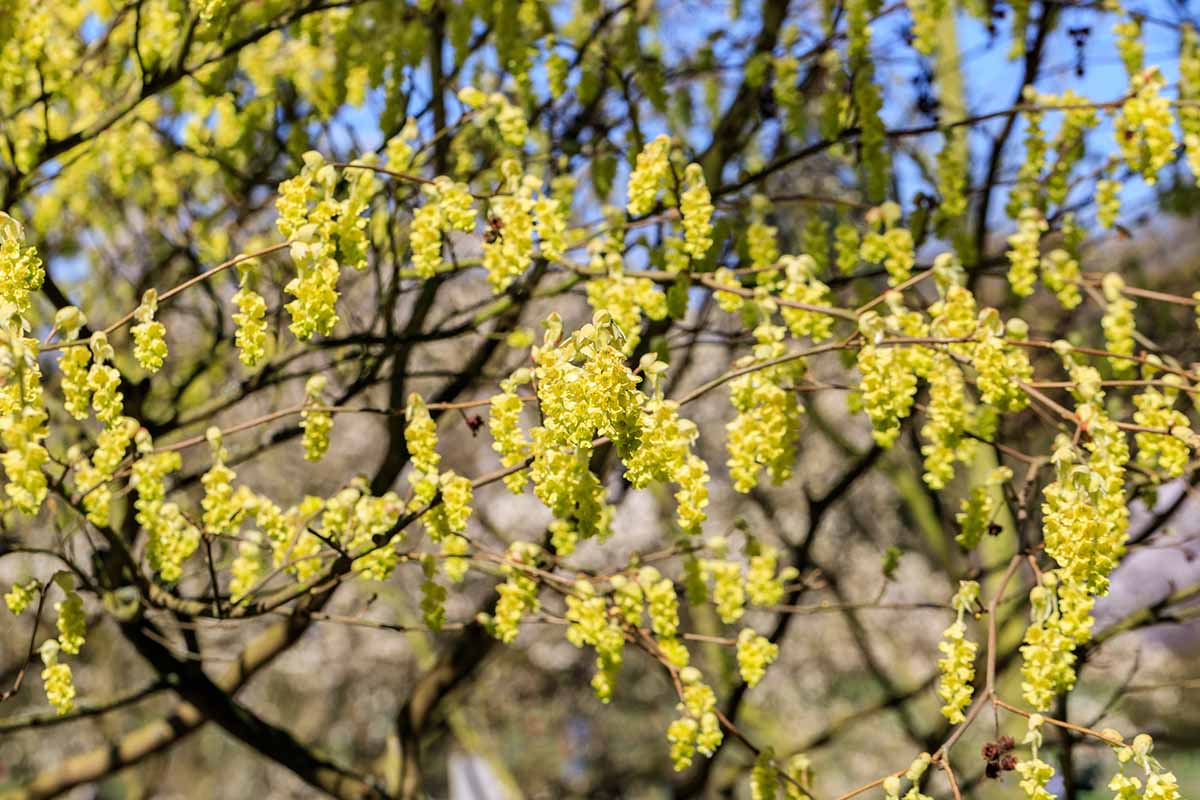
You’re sure to have a grand ol’ time growing and caring for these shrubs. And when you see their blooms for the first time, just remember: spring is about to be sprung!
Still have questions? Want to share your own experiences with winterhazel? Head on down to the comments section below.
Are you a member of the shrub fan club? Upgrade your membership with these delightful bits of shrubbery:

